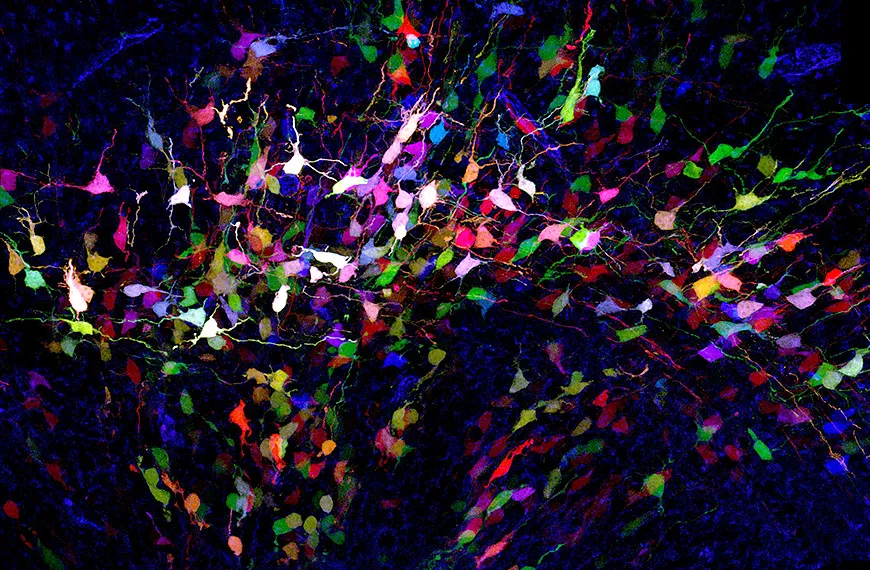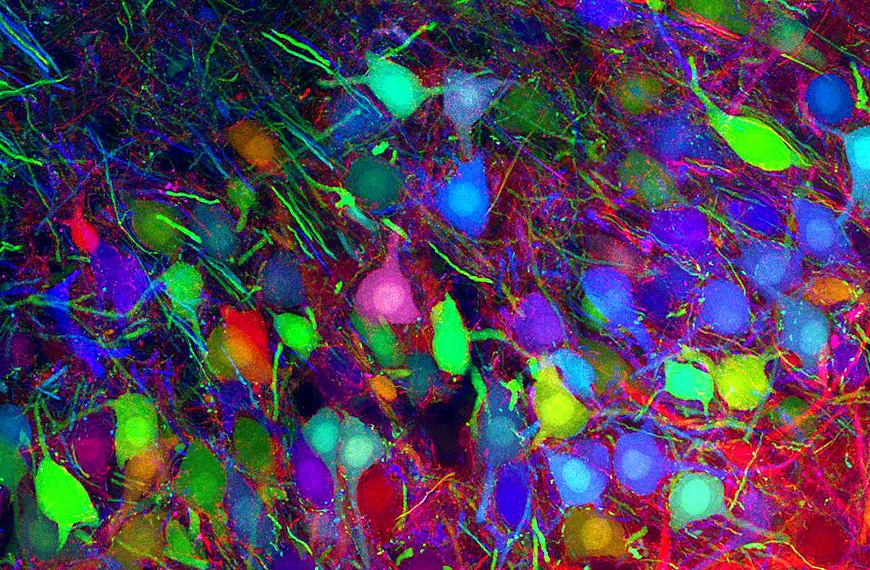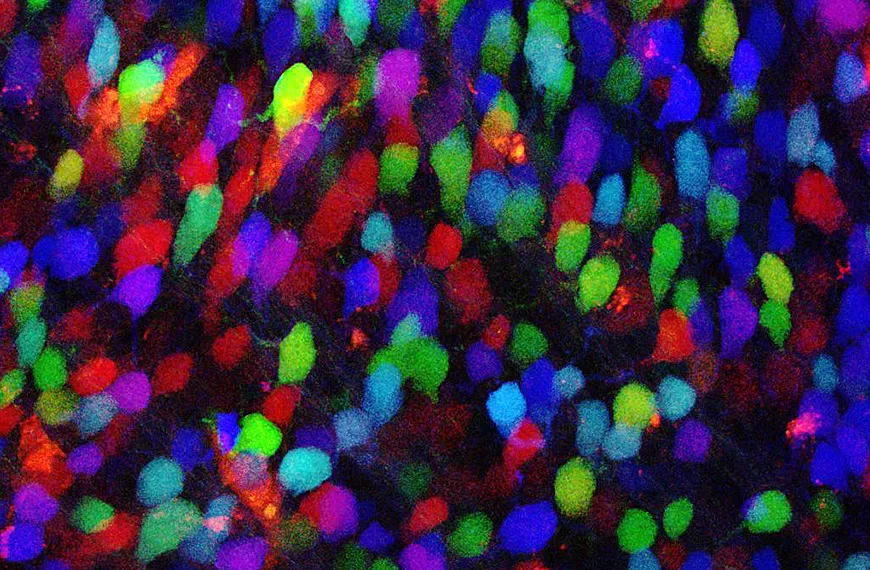Neurogenesis and circuit development
We study how the cells that constitute brain and retinal circuits are generated, differentiate and interconnect during development. Our research is based on new genetic engineering and imaging methodologies enabling to trace neural cell lineage and connectivity
Presentation
Information processing in the brain and retina relies on extraordinarily complex assemblies of neurons and glial cells. The development of these networks raises major questions: how are adequate numbers and types of their cellular components generated? How do these cells distribute in nervous tissue and interconnect together? Our group develops and applies new genetic engineering and imaging approaches to study these questions in situ.
Brainbow
To individually track neural cells in their native environment, we use transgenic approaches such as Brainbow, a technique that distributes combinations of fluorescent proteins of distinct colors among cells of a tissue. These colors discriminate closely apposed neurons, providing a way to trace their processes (axons, dendrites) and map neural circuitry. We also use Brainbow color labels to trace the lineage of neural stem cells and identify their clonal progeny. Separately, we develop other synthetic biology methodologies to follow and experimentally modulate neural cell development in vivo.
Neural stem cell lineage and regulation
All neurons of the brain and retina are generated directly or indirectly by stem/progenitor cells of the embryonic neural tube. Understanding how these progenitors produce appropriate numbers and types of neural cells and how their progeny distributes within brain tissue is essential to decipher the links between circuit development, structure and function and to uncover the roots of neurodevelopmental disorders. We study these aspects in the cerebral cortex and retina using Brainbow transgenes to individually mark embryonic neural progenitor cells with distinct colors and characterize their progeny from embryonic to adult stages. We apply this scheme to define cortical and retinal progenitor output, understand their regulation and characterize the organization of their neuronal progeny within nervous tissue.
Sensory circuits structure and development
The fine-scale connectivity pattern of neural circuits reflects their developmental history and conditions their function. Dense mapping of connectivity with synaptic resolution is however challenging due to the limited resolution of light microscopy. Brainbow labeling offer a solution to this problem by multiplexing the tracing of individual neurons with color markers that distinguish them from one another. We apply this approach for “connectomic” tracing of sensory networks with the aim of shedding light on the principles governing their organization, assembly and remodeling during development.



Research areas
- Lineage and regulation of embryonic neural stem cells
- Connectomic mapping of sensory circuitry and study of its development
- Genetic engineering and synthetic biology: new genetic switches and reporter systems to study neural cells and their development
Team members
Scientific publications
Below you will find the latest scientific publications in this field: Neurogenesis and circuit development.





